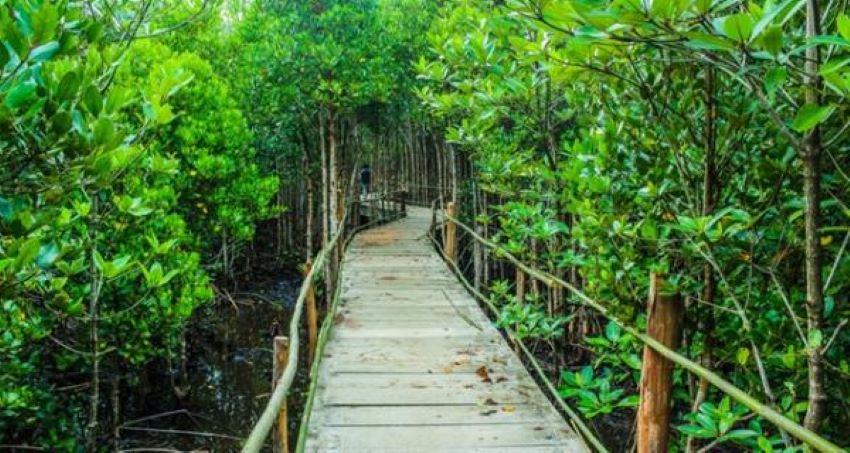Blog |
Securing the banks of Guin Island in Aného: 18,000 mangrove seedlings
The WACA ResIP Togo project has just launched the community sub-project for securing the banks.
The WACA ResIP Togo project, an entity of the WACA platform that assists West African countries in the sustainable management of their coastal zones and in strengthening their socio-economic resilience to the effects of climate change, by facilitating access to technical expertise and financial resources through projects, has just launched the community sub-project for securing the banks of Guin Island in the city of Aného (about 50 km east of the capital Lomé).
This sub-project is part of sub-component 3.2 of the project, related to social climate adaptation and community development projects which finances investments for community development solutions such as climate resilient community development, small works such as rehabilitation of small public infrastructure damaged by flooding or erosion, (e.g., cleaning of natural channels, cleaning and improving the performance of drainage channels, desanding and reforestation of vulnerable areas prone to river and/or marine flooding), sustainable land, forest and water management practices in watersheds and areas of high ecosystem value.
Specifically, the restoration of riverbanks and the adoption of sustainable land management practices (SLM) and mangrove conservation/restoration are being initiated. These are mangrove reforestation activities and community management of 500 ha (including protected areas) in the Gbaga channel, Lake Boko and Lake Togo in the maritime region and other sites conducive to the development of mangroves and associated species.
For the locality of Aného, it is the restoration of mangrove on the island Guin of the commune Lacs 1, to recreate the original plant cover of the locality, degraded over the years and limit coastal erosion. "The final goal is to give a certain attractiveness to the island to create an income-generating environment for the youth, women and men of the city of Aného and promote tourism," said Adou Rahim Alimi, coordinator of WACA ResIP Togo.
In detail, it is planned to create a belt of 6m with 18,000 mangrove plants around the island with a layout of 3X2 and 4000 plants in the back of mangrove.
It is also planned to reforest 9,500 seedlings in degraded areas. Arrangements have been made to monitor this project.
In times of drought, firewalls will be created around the plants and people have been hired to monitor and maintain the plants. The protection of the island is envisaged with the construction of two watchtowers with night binoculars and the construction of an airy space on the island for cultural and festive activities in connection with income generating activities and tourism.
"A work of sensitization is made in collaboration with the district chiefs, the CDQ makes that the population becomes, itself, the guardian of this project", said Alexis Aquéréburu, mayor of the commune Lacs 1.
He said he was happy with the choice of his locality by the initiators of the project, especially the government and the World Bank who are financing the project.
"It is a project of life, but at the same time, a project of happiness. It is a hope of reconciliation between the people of the sea (population of Aného) and the sea itself which has become their enemy.
A day of sunshine in the sense that it allows for hope. The days are not far off when the coast will be consolidated and the beaches will be more beautiful and give satisfaction to the people and visitors," he said.
For the women of the locality, the restoration of the mangrove is a godsend because the disappearance of the mangrove has caused many problems for the population of the locality. An important place is reserved for them in the implementation of this project which they take care of as the apple of their eyes, admits the mayor.
"We are now organized in a cooperative to take care of the protected sites that now allow us to draw enormous benefits," said lady Dravie Anryon, a resident of the locality.
